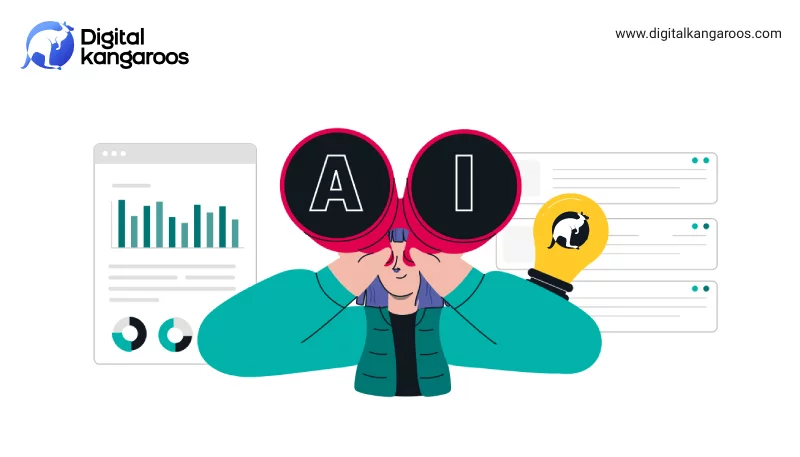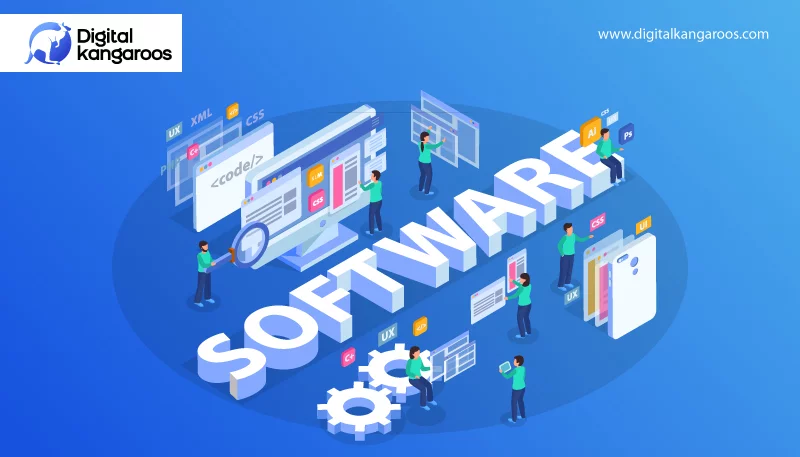Creating an online presence involves a crucial decision between developing a websites or a mobile apps for your business. Each...
Creating an online presence involves a crucial decision between developing a websites or a mobile apps for your business. Each option comes with its advantages and disadvantages, and the choice should align with your business needs and online goals.
When making the decision, it’s essential to analyze what your target audience is seeking. A key consideration is whether your goal is to reach a broad audience or a more specific one. For instance, if your aim is to connect with a larger audience, opting for a website might be the more suitable choice.
Conversely, if your focus is on a more targeted audience, a mobile app could be the preferred option. Ultimately, the decision depends on your specific requirements and the type of customers you aim to engage.
Advantages and Disadvantages of Website Development
Building a website offers numerous advantages, including broad audience reach, user-friendly accessibility, and customizable design. However, it also comes with disadvantages, such as potential limitations in mobile optimization and design flexibility.
Advantages:
1. Reach a Larger Audience: Websites, accessible via web browsers, enable reaching a vast audience with internet connectivity, enhancing accessibility.
2. Ease of Use: Websites are generally more user-friendly than mobile apps, as users can access them without the need for downloads, using any internet-connected device.
3. Customizable Design: Websites provide flexibility in design, allowing customization to align with a business’s brand. Updates can be easily implemented to stay current with trends and preferences.
Disadvantages:
1. Not Optimized for Mobile Devices: Websites may lack optimization for mobile devices, leading to a suboptimal user experience, as they are primarily designed for web browsers.
2. Limited Design: The design possibilities of websites may be more restricted compared to mobile apps, potentially limiting the overall user experience in terms of interactivity.
Advantages and Disadvantages of Mobile App Development
Developing a mobile app offers advantages such as tailored and immersive user experiences, optimized mobile device performance, and targeted service delivery. However, it comes with drawbacks, including higher costs, maintenance needs, and a potentially limited audience.
Advantages:
1. Tailored and Immersive Experience: Mobile apps can deliver highly customized and engaging experiences by focusing on specific features tailored to meet the needs of a particular audience.
2. Optimized for Mobile Devices: Mobile apps are designed to provide an enhanced user experience on mobile devices, considering screen size and device-specific features.
3. Specific Services or Information: Mobile apps can cater to a specific audience by offering specialized services or information that may not be available on a website.
Disadvantages:
1. Expensive and Time-Consuming: Mobile app development tends to be more costly and time-intensive compared to website development due to the complexity of development and testing.
2. Maintenance and Updates: Mobile apps may require more frequent maintenance and updates to ensure compatibility with various devices and operating systems, adding to the management challenges.
3. Limited Potential Audience: Requiring users to download from an app store may limit the potential audience, as some users may be hesitant or lack the required devices or operating systems.
Factors to Consider When Choosing Between a Website and a Mobile App
When faced with the decision of whether to build a website or a mobile app for your business, various factors come into play that can significantly impact your choice.
1. Functionality and Features:
– Evaluate the desired functionality and features for your platform. Websites excel in informational and content-centric domains, while mobile apps are better suited for complex, interactive platforms requiring advanced features like geolocation, camera integration, and push notifications.
2. Maintenance and Updates:
– Consider the ease of maintenance and updates. Websites are generally more straightforward to maintain and can be instantly updated without requiring users to download new versions. Mobile apps, however, necessitate additional maintenance and updates, which can be both time-consuming and expensive.
3. Monetization:
– Deliberate on how you intend to monetize your platform. Websites commonly generate revenue through advertising and affiliate marketing. In contrast, mobile apps have diverse revenue streams, including in-app purchases and subscription models.
4. Branding and Marketing:
– Evaluate how the chosen platform aligns with your overall branding and marketing strategy. Websites can be optimized for search engines and social media, while mobile apps offer a more direct and personalized user experience.
5. Data and Analytics:
– Consider the type of data and analytics you aim to collect and analyze. Websites typically provide advanced analytics tools, while mobile apps can offer more detailed user behavior data.
Decision-Making: Website or Mobile App for Your Business
Deciding between building a website or a mobile app for your business involves thoughtful consideration of several factors:
1. Consider the Purpose of the Platform:
– Define the purpose of your online presence. Websites suit businesses needing a simple platform for providing information, while mobile apps are ideal for interactive and immersive experiences.
2. Consider the Cost:
– Evaluate the costs associated with developing a website or a mobile app. While websites are generally more cost-effective, the long-term value of a mobile app should be considered.
3. Consider the Timeline for Development:
– Weigh the urgency of your project against the development timelines for websites and mobile apps. Websites are typically faster to develop, but mobile apps offer a more immersive experience.
4. Consider the User Experience:
– Factor in the user experience. Websites are easier to use but may lack optimization for mobile devices. Mobile apps provide tailored and immersive experiences but require users to download them.
5. Consider the Needs of Your Target Audience:
– Understand the demographics, preferences, and habits of your target audience. This information will guide whether a website or a mobile app is better suited to reach your audience effectively.
Conclusion:
In the contemporary digital landscape, establishing an online presence is indispensable for businesses seeking to connect with their target audience and cultivate a robust digital identity. Whether opting for a website or a mobile app, businesses can navigate the digital realm to foster engagement and growth.
Yet, amidst the myriad choices available, the decision between developing a website or a mobile app can be a formidable undertaking. Key considerations such as the platform’s purpose, cost implications, development timeline, user experience, and alignment with the target audience’s needs are pivotal in making an informed choice.
Deliberate research into these options empowers businesses to make decisions that resonate with their goals and audience preferences. Taking this proactive approach ensures a strategic choice, allowing businesses to harness the power of a tailored online platform.
For expert guidance and seamless development of websites or apps, consider reaching out to Digital Kangaroos, a leading web development and software company. Elevate your digital presence with solutions tailored to your business needs. Contact Digital Kangaroos today for a transformative online experience.
FAQs:
1. What factors should I consider when deciding between a website and a mobile app for my business?
– Consider factors such as your target audience, desired features, maintenance requirements, and overall business goals. Analyze whether you need a broader reach (favouring a website) or a more immersive experience (favouring a mobile app).
2. How do websites and mobile apps differ in terms of advantages and disadvantages?
– Websites offer broad audience reach, ease of use, and customizable design. However, they may lack mobile optimization. Mobile apps provide tailored experiences but are costlier and may have a more limited audience due to downloads.
3. What role does user experience play in the decision-making process between a website and a mobile app?
– User experience is crucial. Websites are generally user-friendly but may lack mobile optimization. Mobile apps offer tailored and immersive experiences but require downloads, impacting user accessibility.
4. Can you provide insights into the cost and timeline considerations for developing a website or a mobile app?
– Websites are generally more cost-effective and have shorter development timelines. Mobile apps, being more complex, tend to be costlier and have longer development times. Cross-platform development tools can streamline timelines.
5. Why is it essential to align the chosen platform with the needs of the target audience?
– Understanding the demographics, preferences, and habits of your target audience ensures that your chosen platform—whether a website or a mobile app—effectively engages and meets the needs of your audience.
6. How can Digital Kangaroos assist in the seamless development of websites and apps for businesses?
– Digital Kangaroos, as a leading web development and software company, offers expert guidance and tailored solutions for businesses. Their services ensure a transformative online experience aligned with your specific business needs.
7. What are the key considerations for monetization and branding when choosing between a website and a mobile app?
– Websites often rely on advertising and affiliate marketing, while mobile apps can leverage in-app purchases and subscription models. Consider how each aligns with your branding and marketing strategy for optimal revenue generation.
8. In what scenarios is a website more suitable, and when does a mobile app offer a better solution for business goals?
– A website is suitable for businesses needing simple online presence and information sharing. Mobile apps are ideal for businesses focusing on interactive and immersive experiences, catering to a more specific audience.






